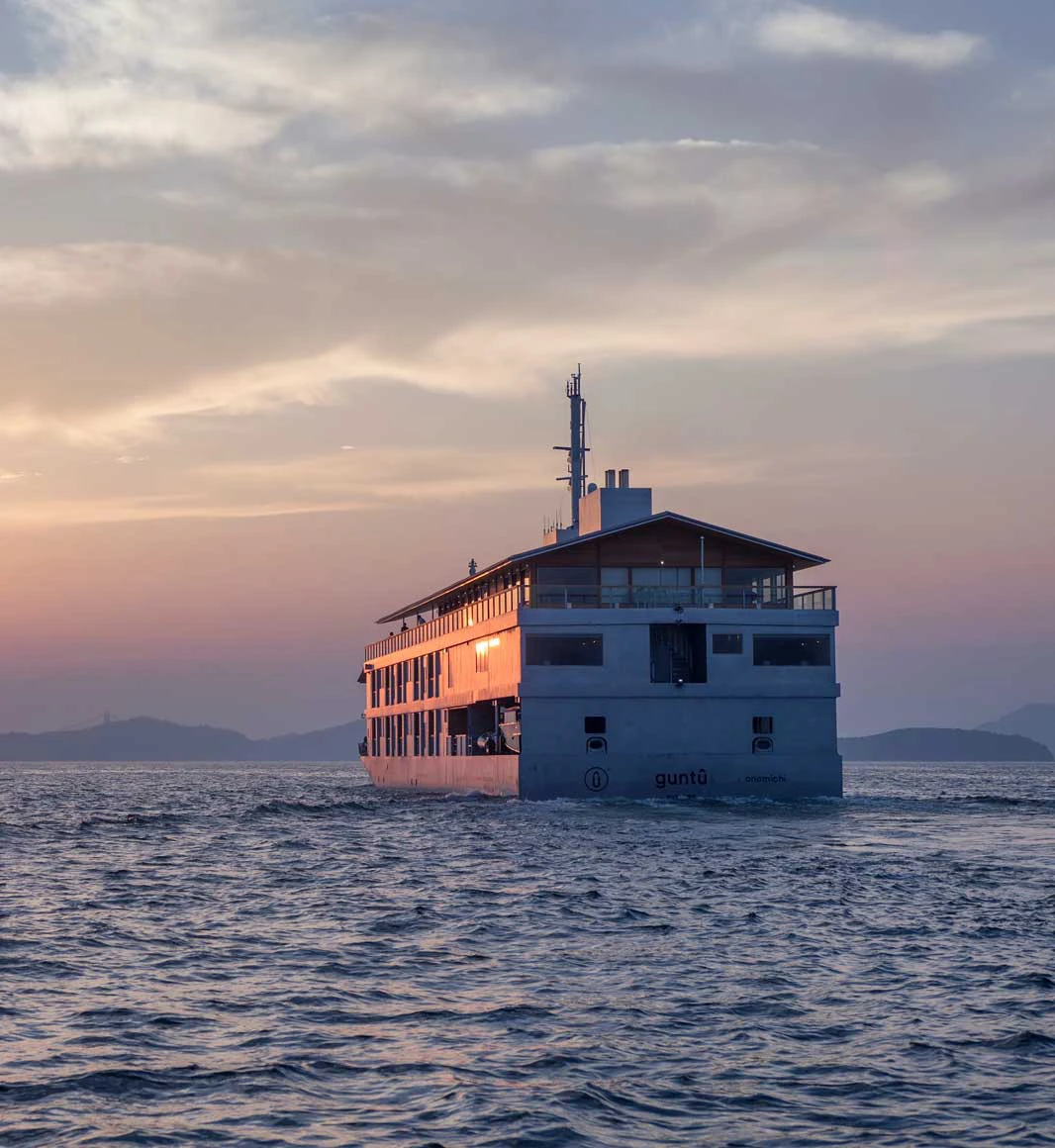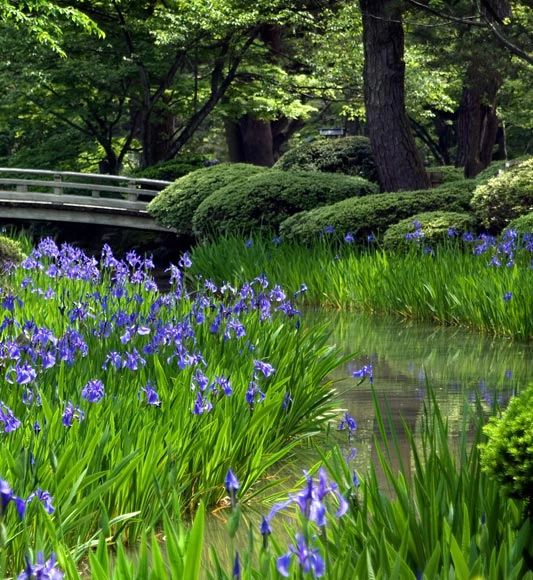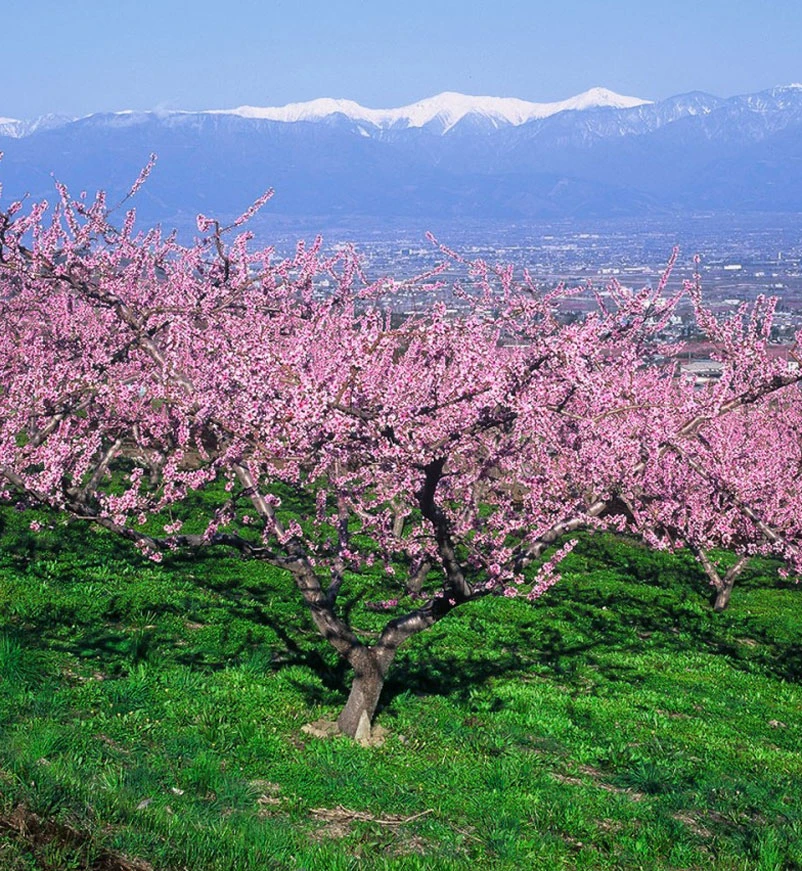
Peach trees in Yamanashi. (©Yamanashi Tourism Organization/JNTO)
Wherever I travel, whether it’s for work or on holiday, I always look for places that allow for unhurried and in-depth explorations. Two of my favourite destinations in Asia for walking off the beaten path are Japan and Bhutan. Both cultures follow Buddhism, are deeply spiritual and worship nature. This means their connection to nature is more rooted than most other rapidly developing nations and their natural habitat is being preserved with much greater attention and dedication.
Whether you are a seasoned hiker or prefer a gentle stroll, I can recommend destinations to suit. Read on to discover a few of my favourite walking routes in Japan.
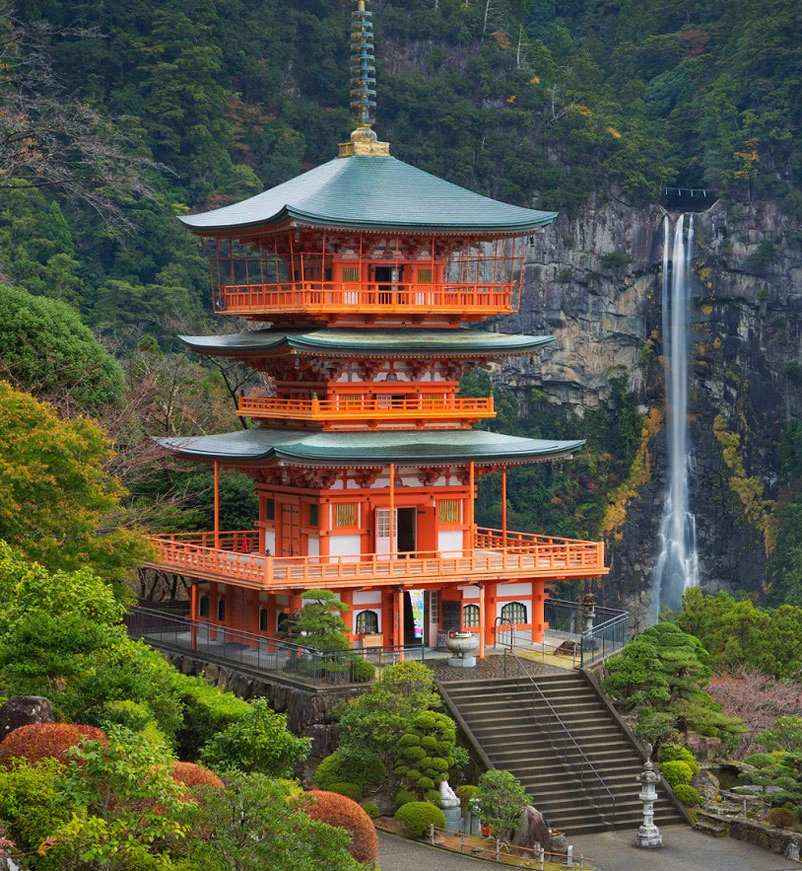
Nachi Falls. (©Kumano Kodo)
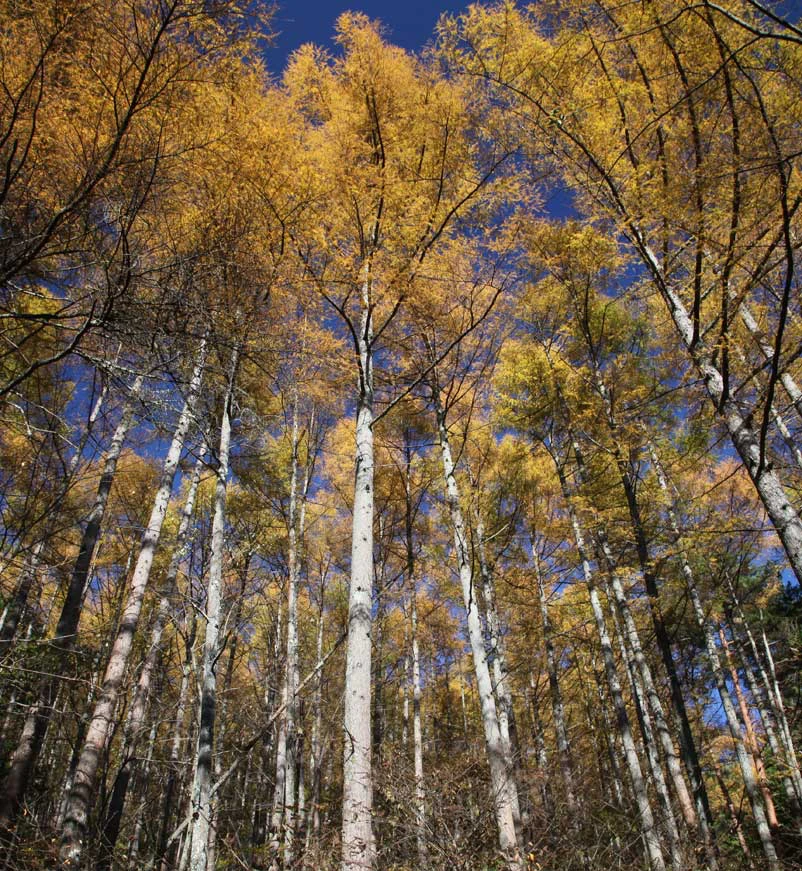
Mt Mitsutoge. (©Yamanashi Tourism Organization/JNTO)
"Sample simple local food, bathe in some of the oldest hot springs in the country and discover beautiful shrines."
1. Walk the Kiso Valley and Nakasendo Trail
The Nakasendo Trail, located in Central Japan, is one of the country’s most legendary walking routes. Historically this route was part of feudal Japan’s network of trade routes. Travellers between Edo (now Tokyo) and Kyoto were almost always forced to make the entire journey on foot due to the restrictions imposed by the Shogunate.
As a result, various “post towns” came up every few kilometres along the way with places to eat and rest. These can now be used as a convenient base for an overnight stay. Of all the 69 towns, Magomem Tsumago and Narai have been particularly well-preserved with traditional cobbled streets and wooden buildings exuding the charm and history of a bygone era.
Although there are many interesting sections along the route, the scenic trail from Magome to Tsumago is one that I’d recommend. The eight-kilometre section takes about three hours to cover and is suitable for anyone with a moderate-to-good level of fitness. Despite being so well documented, the area is very quiet and “untouristy”.
A delightful feature along the route is the succession of little bells that are placed for walkers to ring, not for prayer but more practically to keep the bears away! Although bear sightings are rare, the valley is rich in wildlife including monkeys and a variety of birds. For accommodation, I recommend Urara Tsutaya, a charming little ryokan with 11 comfortable rooms and exquisite traditional food.
2. Explore Kobuchizawa in Yamanshi’s Hokuto region
Located at the southern foot of Mount Yatsugatake, on the Kobuchizawa Plateau, the town of Kobuchizawa is a real hidden gem. Offering incredibly unique and undiscovered gems such as amazing mountain landscapes, pristine forests, intimate art museums, sake breweries and one of Japan’s best whisky distilleries, there is plenty to see and do here.
My favourite walking route here is Shojingataki Falls, one of Japan’s highest waterfalls. It’s relatively easy and suitable for beginners, but there are also other more challenging routes suitable for more advanced hikers. The forest is truly beautiful as you meander alongside the river and across several suspension bridges. In autumn the entire forest turns a stunning red and gold – a magnificent sight.
As well as being a great area for walking and horse riding, Kobuchizawa is also home to the only permanent exhibition devoted to 80s New York pop artist, Keith Haring, a man who found real fame in Japan before dying tragically young. Award-winning architect, Atsushi Kitagawara, took inspiration from Keith Haring’s artworks when designing the nearby Hotel Keyforest Hokuto and guests receive free entry to the gallery when staying at the hotel.
3. Breathtaking views in the remote Iya Valley
Located on Shikoku Island, Iya Valley is one of the most isolated regions of Japan. Dotted with cottages and covered with lush maple forests, the valley offers spectacular views. Previously, the region served as a safe refuge for the survivors of the Taira clan after their defeat by the Minamoto at the Battle of Yashima in 1185. Swapping the sword for the hoe and scythe, the warriors became farmers and, today, many villagers claim to be direct descendants of those who served at the court during the Heian era.
I recommend exploring the area around Mount Tsurugi – Shikoku’s second-highest mountain – which has excellent walking and hiking routes. The summit (1,955 metres) offers the most incredible views of the valley and is most striking during the months of autumn.
There is a decent traditional ryokan in the area, but for an authentic local experience, I recommend staying in a renovated thatch roof farmhouse in the historic Ochiai village where a delicious hot pot dinner will be prepared for you by a local Oka-san (mother). If you enjoy gourmet cuisine, then there’s also an opportunity to learn how to make traditional Iya-soba from a local villager. Although it’s more suitable for seasoned travellers who are not put off by rustic and basic facilities, this region offers one of the most authentic and pure local experiences.
Highlights of walking holidays in Japan
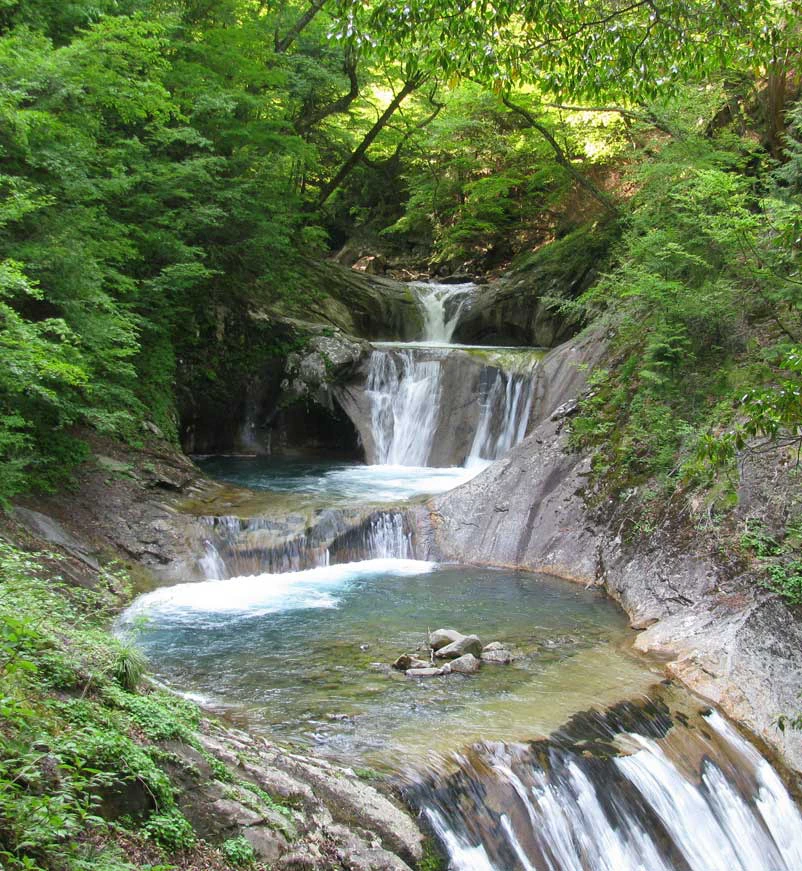
Chichibu Tama Kai National Park (©MOEJ)
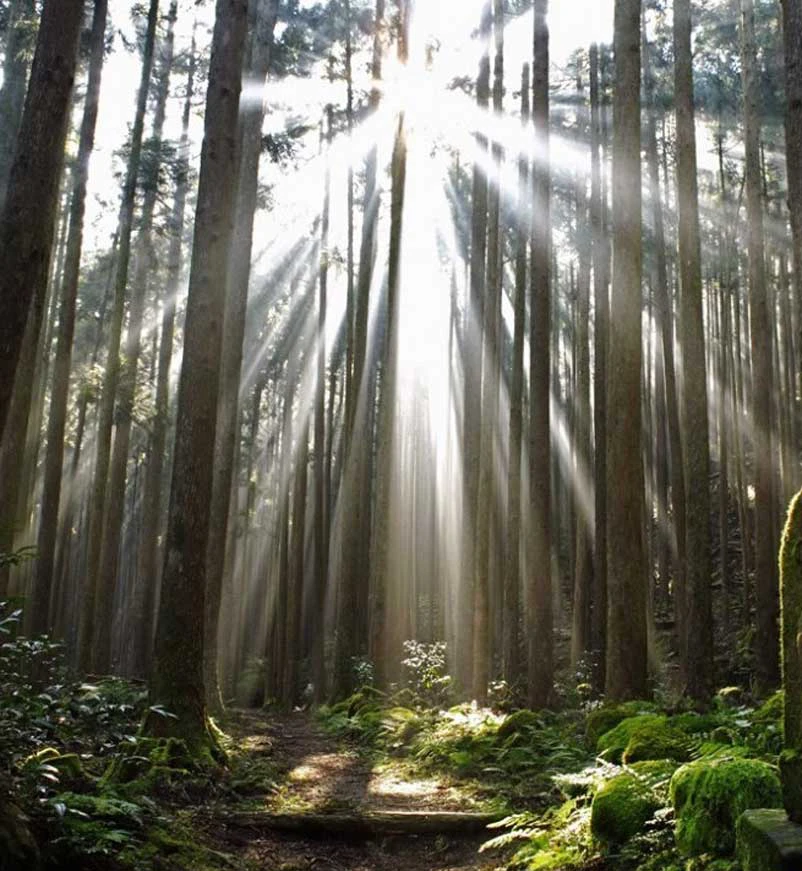
Kumano Kodo (©JNTO)
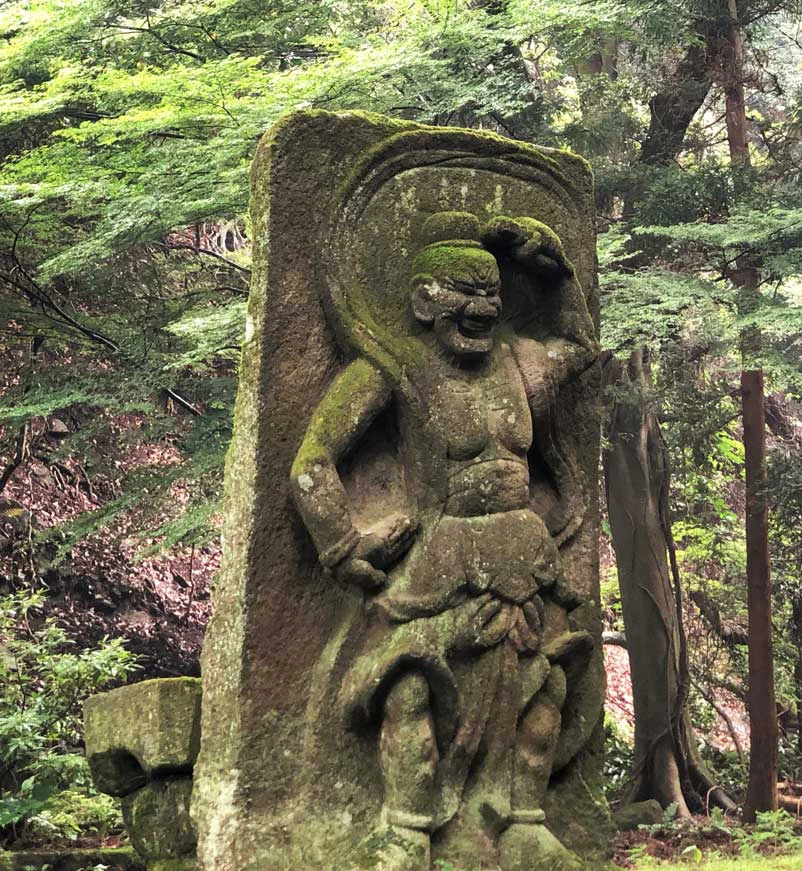
Kunisaki Peninsula (©The Real Japan)
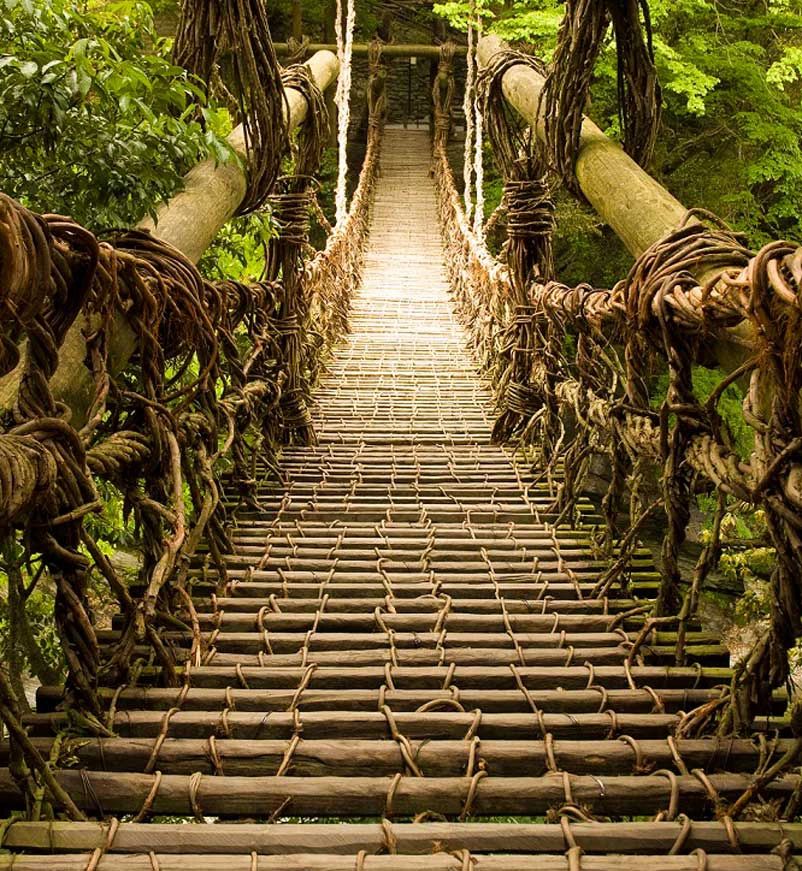
Kazurabashi Vine Bridge
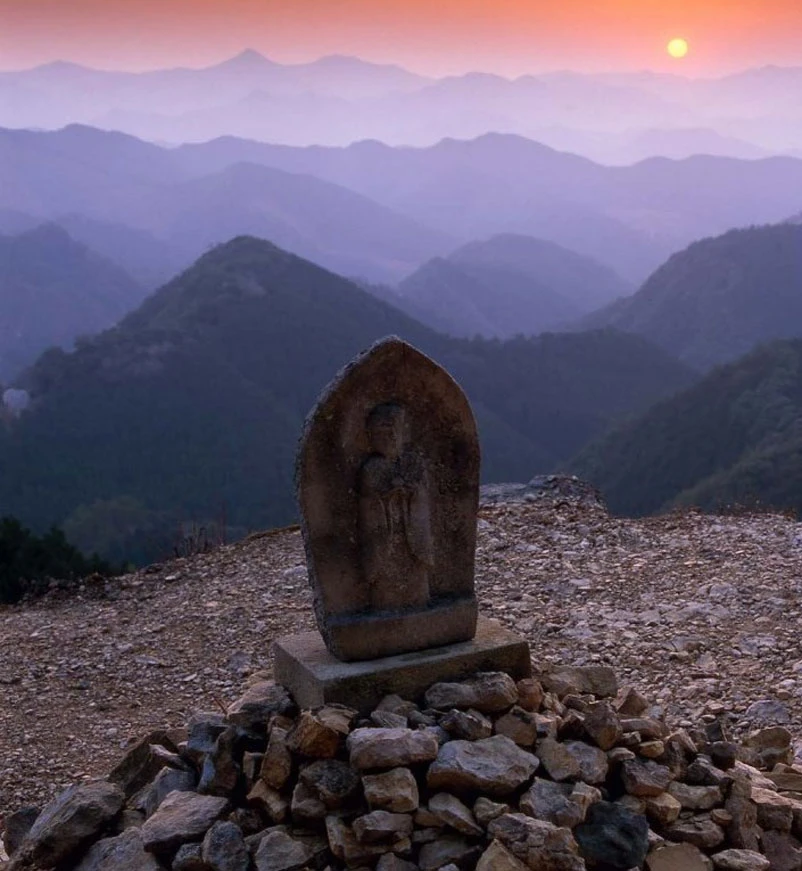
Sunset in Kumano Kodo mountains (©JNTO)
4. Hike through UNESCO World Heritage Sites: Kii Peninsula and Kumano Kodo
Located to the south and east of Osaka, Kii Peninsula is the most spiritual region of Japan and one of the finest walking areas in the country. The area is home to the Kumano Kodo trails, a network of centuries-old pilgrimage routes leading to the Three Grand Shrines of Kumano region and Mount Koya, the centre of Shingon Buddhism.
The whole mountain range is a UNESCO World Heritage Site and is ideal for intrepid travellers interested in multi-day walks. The rugged and often steep trails offer breathtaking views of the mountains and the Pacific Ocean, along with an opportunity to stay in remote and ancient inns and guest houses. Sample simple local food, bathe in some of the oldest hot springs in the country and discover beautiful shrines. I love the region’s spiritual and religious aspects. My favourite trek is the 10th century Nakahechi route which runs west to east between Tanabe and the grand shrines.
One of my favourite views in the area is of the Nachi Taisha Shrine with Nachi no Taki in the background – the tallest waterfall in Japan. The sight is breathtaking; a place for reflection and peace.
5. Discover the trails of Kunisaki Peninsula on Kyushu Island
Located in northern Oita Prefecture on the eastern coast of Kyushu, the Kunisaki Peninsula has been a training ground for Shinto religion for centuries, dating back as far as 660 BC. The peninsula is home to a unique local Buddhist culture called “Rokugo Manzan”, which comprises elements of Buddhism, Shinto and mountain worship. Kyushu remains one of the most secluded regions in Japan and is renowned for its natural beauty. This region has several lush forested valleys located around Mount Futago in the centre.
One of my favourite walking trails is the Kunisaki Peninsula Long Trail, which consists of 10 courses ranging from 11 to 18 kilometres that are suitable for all ages and fitness levels. There are also very interesting temples in the region including Monjusen-ji Temple, founded in 648 and the 1300-year-old Futago-ji Temple which is spread across a vast area on the forested mountain slopes.
Ready to take the road less travelled?
Related articles
